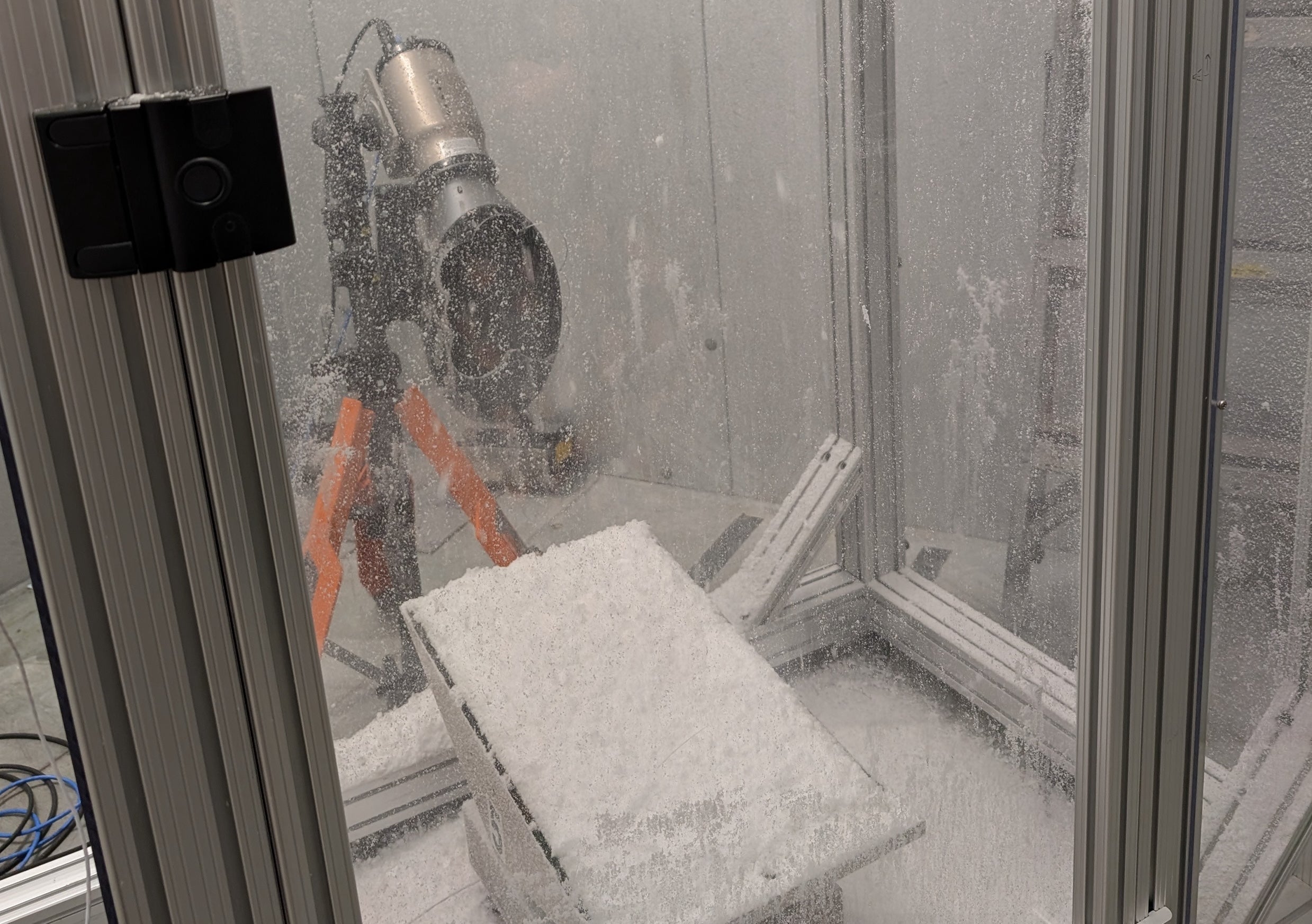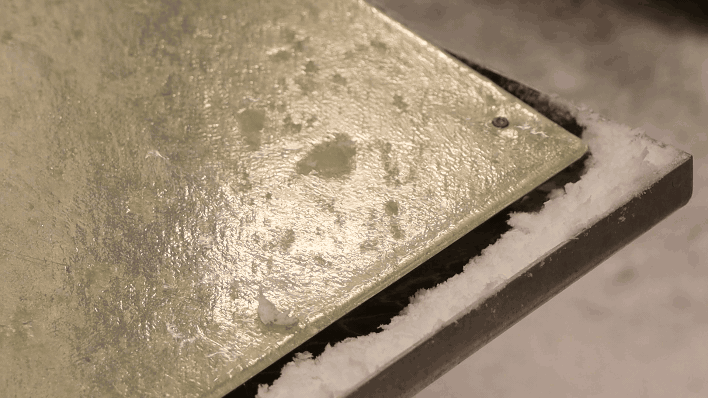Let it snow . . . indoors
NSF NCAR scientists create snow laboratory
May 8, 2025 - by Audrey Merket
May 8, 2025 - by Audrey Merket

The snow machine is a tool that allows for reliable, year-round testing in snow conditions. The aviation industry plans to use it for testing deicing fluids, but there are many other potential use cases for the machine, such as testing drones or various types of instruments that will be used in cold, snowy environments. (Image: Audrey Merket/UCAR)
|
Impact statement: The snow machine provides a reliable, consistent way to test deicing fluids for airplanes to make flights safer as well as equip ground crews with knowledge that will make the application of these fluids more efficient. |
Researchers at the U.S. National Science Foundation National Center for Atmospheric Research (NSF NCAR) have developed an innovative tool for reliable, year-round testing to evaluate the performance of aircraft deicing fluids in snow conditions.
The “snow machine” replicates the density and size ranges of naturally occurring snow and, after two decades of development, is ready for implementation. The research has been funded by the Federal Aviation Administration (FAA), which has been seeking a consistent way to test deicing fluids for airplanes to make flights safer as well as equip ground crews with knowledge that will make the application of these fluids more efficient.
“The snow machine provides a controlled laboratory environment where we can reliably and more accurately test deicing fluids any time of the year,” said NSF NCAR scientist Scott Landolt, who led the development, “This is a huge improvement from when we would have to wait for snow outdoors and then hope that temperatures don’t change much and the snow rates are consistent long enough that we can perform tests.”
There is even talk within the international community of approving the snow machine as a standard for testing these fluids. Beyond aviation, there are many other potential use cases for the machine, such as testing drones or various types of instruments that will be used in cold, snowy environments.
Initially, when the scientists set out to make an instrument that could make snow, they turned to the ski industry. Ski resorts have long made artificial snow to supplement snow falling on their slopes. When the snow machine team tried the technique of spraying water into cold air, they found that the resulting snow did not accurately represent real-world snow conditions experienced by airplanes awaiting takeoff.
Instead, the scientists found inspiration for generating precipitation that mimics natural snow in a classic summer dessert: snow cones.
The snow machine functions similar to a giant shaved ice machine, but with added complexity to match the size, distribution, fall velocity, density, and liquid water equivalent of natural snow. At the top of the machine, cylinders of ice are fed into specially designed drill bits that shave flakes off of them. The speed of the motors turning the drill bits determine the size of the flakes. Slower speeds produce bigger flakes and faster speeds produce smaller flakes.
The machine is composed of a rectangular aluminum box with clear polycarbonate walls about the size of three refrigerators set up inside a large cold room. The temperature of the machine can be controlled anywhere from freezing to -30°C (-22°F). A software system designed by NSF NCAR scientists and software engineers allows the user to set the snow rate to a constant speed or program it to simulate a previously recorded outdoor snow event.
This snow machine is a completely original design. The three-person team sourced raw materials and adjusted the design as challenges arose. A question that plagued the team for years was how to get an even distribution of snow across the bottom of the machine. Earlier versions of the machine shaved the ice at fixed points and the snow would pile up in one spot. By integrating a back-and-forth movement of the ice shaving components, similar to that seen in 3D printers, the machine now evenly distributes the snow using a sweeping motion.
Creating the almost four-and-a-half-foot cylinders of ice used in the machine also required innovation. The ice cylinders are frozen vertically in a cold chamber before being mounted horizontally into the snow machine. Water typically freezes from the top down, but that natural process put too much pressure on the bottom of the tubes the scientists were using to create the cylinders, which resulted in the aluminum bottom breaking. The team needed to devise a method to get the water to freeze from the bottom up. They discovered that heavily insulating the top and tapering the insulation down the tubes kept the cylinders intact.
“This technology has been a long time coming and so many people are excited to be able to use it,” Landolt said, “There are already plans for how we’re going to continue to develop it – such as incorporating wind or rain mixed with snow.”

To learn more about the snow machine, watch Scott Landolt’s Explorer Series talk.